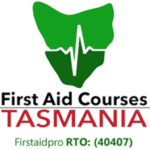When someone is having trouble breathing all of a sudden, your first instinct should be to look for warning signs of choking. In this blog, we cover different signs of choking that you should look out for.
What Happens To The Body When You Choke?
When food or other foreign objects becomes stuck in the person’s airway, it can result in airway blockage, which eventually leads to choking.
Choking is a scary and serious experience, particularly for infants and toddlers. This condition prevents oxygen from getting to the lungs and the brain. And without oxygen, brain damage and death can occur within minutes.
If someone is truly choking, they won’t be able to speak, cough, make noise, or breathe.
If you fully know and understand how your body works and reacts to any foreign substance, it will help you recognise, respond, and prevent a choking emergency.
Common Signs Of Choking
Here are five additional signs of choking you should be aware of.
1. Difficulty Breathing
If the person is not breathing or is gasping or wheezing heavily – it could be a sign of choking. If the object is completely blocking the airway, they may not be able to talk or breathe at all.
2. Bluish Lips And Skin
Choking results in suffocation, which means the person does not get enough oxygen in the blood. Because of this, one of the surest signs of choking is the bluish tint in the face, lips, and fingertips.
Take note that this sign may not appear immediately as it takes time for the blood to become less oxygenated.
3. Unable To Cry Or Make Noise
For children, we’d like to think that they would cry out for help if they were unable to breathe. False.
The truth is it is impossible for them to make noise when their airway is blocked. If the child looks like they are crying, but with no sound, there is a possibility of choking.
4. Hand Signals
If the person begins flailing their arms or seems otherwise distressed and panicked, it could be a warning sign of choking. This is especially true, especially if they look at you with panicked eyes and begin waving their arms around in the air to get someone’s attention.
5. Loss Of Consciousness
Another extremely troubling sign of choking could be fainting or loss of consciousness. If a child or an adult goes unconscious, you will need to perform CPR (cardiopulmonary resuscitation).
First Aid For Choking
Choking is a true medical emergency that requires urgent and efficient action from bystanders.
Here are ways how you can help.
- Call 000. If you are not sure how to help a person who is choking, call for emergency help right away. Emergency dispatchers are trained to walk you through lifesaving procedures and will also send professional help your way.
- Administer back blows. Start by positioning the person with their face down and mouth open. Then, using the heel of your hand, administer up to five quick blows into their back, right between the shoulder blades.
- Perform chest thrusts. After administering back blows and it did not dislodge the item, turn the person over on its back. Place two fingers in the middle of their chests and give five quick thrusts downwards. Do it for about one-third of the depth of the person’s chest.
- Repeat cycles of back blows and chest thrust until the blockage is removed or until help arrives. If the person loses consciousness, you will need to perform CPR.
Conclusion
It only takes a couple of minutes for choking to cause irreversible brain damage and possibly death. There is not very much time to do nothing and only wait for medical help to arrive.
With every second being a matter of life and death, it should be common knowledge to everyone how to recognise signs of choking and how to provide Heimlich maneuver and other intervention techniques.
The universal signs of choking are of the above difficulty breathing, bluish lips and skin, making hand signals, and losing consciousness. However, signs and symptoms may exhibit in many other ways, so you should be more aware of what to look for in these situations.
Effective choking management is simple and often taught during first aid and CPR classes.
Visit our course page or contact us for more information.








